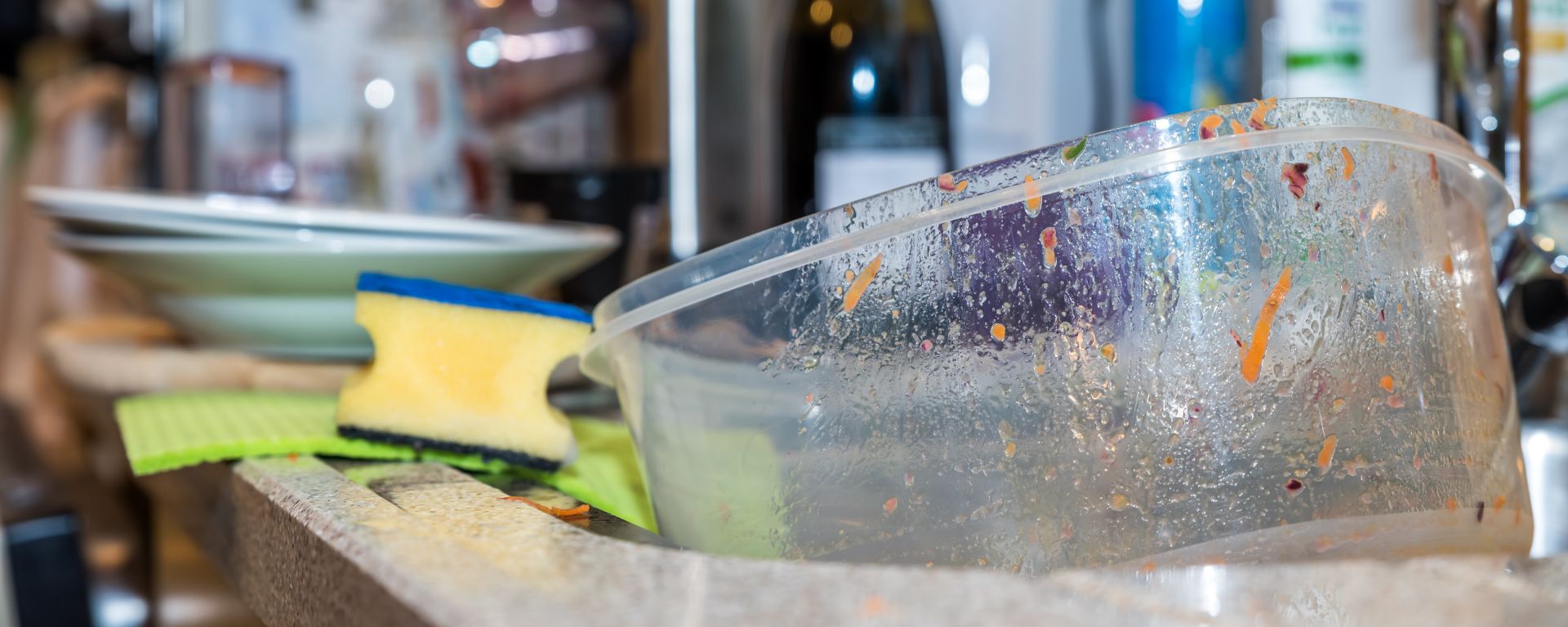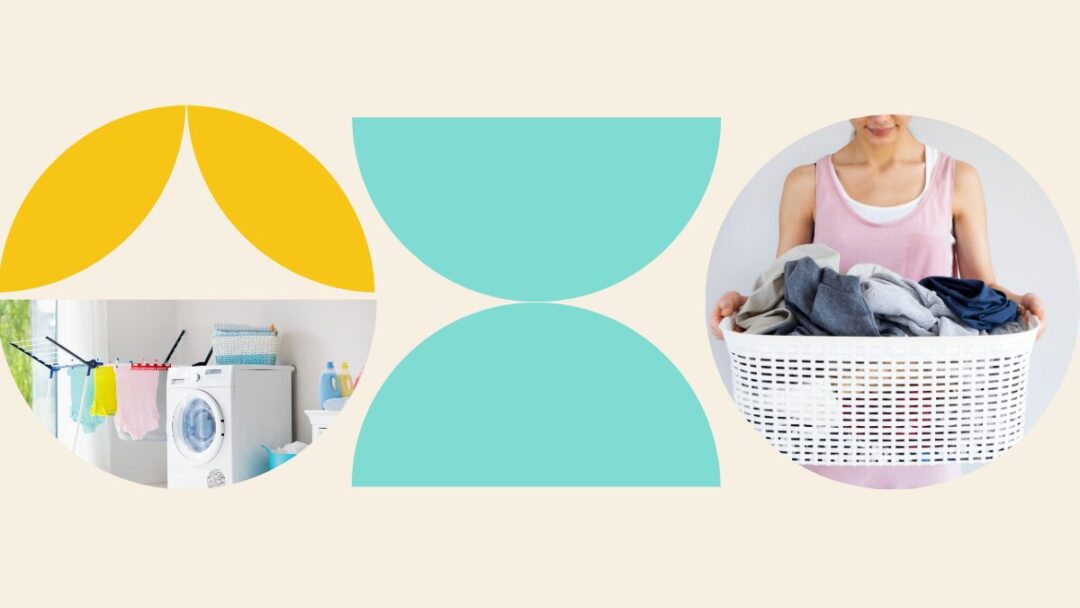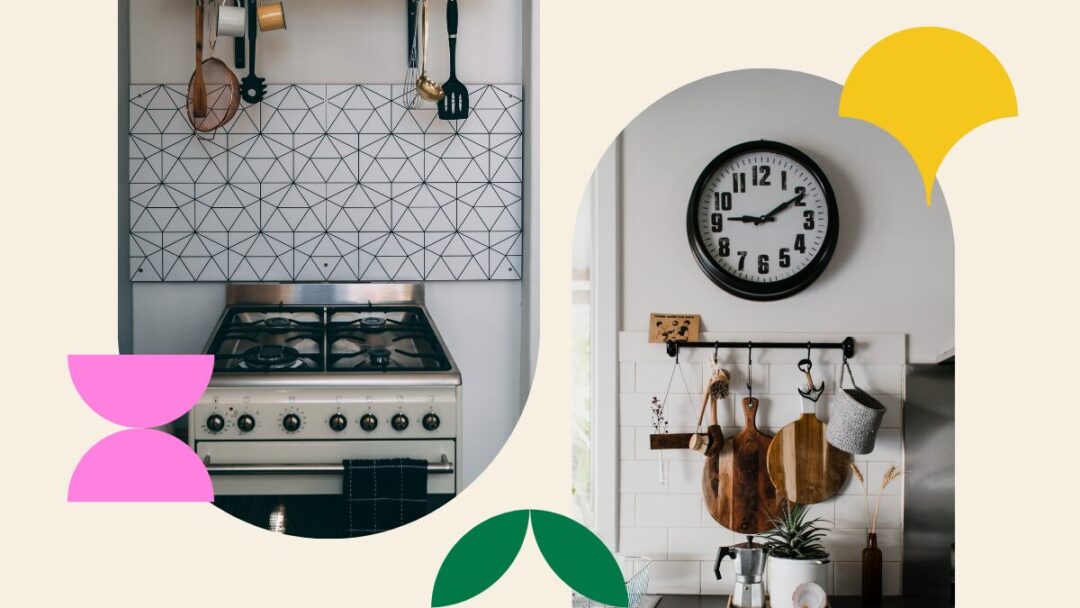Plastic containers are convenient, portable, and do not break easily. But, they can easily become stained, especially when they are used to store dyed or acidic foods such as tomato sauce. Even if they are washed in the dishwasher, no one wants to eat from a container that has curry stains from last month in it. It’s often easier to throw away these containers than have to look at the stains that aren’t going away. Follow these cleaning tips to restore your containers and Tupperware to look stain-free and good as new.

1. Wash The Container
Firstly, before you tackle stains, you’ll want to make sure that the container has been washed thoroughly, and rinsed with hot water. If the container still has a lot of grease or oil in it, then before washing, use a paper towel to remove the grease. Once you’ve done that, it can be washed in the sink with hot water and dishwashing liquid, or placed on the top rack of the dishwasher. Make sure you know how to clean your kitchen sink so that it doesn’t transfer unwanted bacteria to your containers. You’ll want to dry your plastic container with a tea towel, or on the low heat cycle on your dishwasher.
2. Does Your Container Have Scratches?
Your plastic containers may have scratches from a knife or other utensils – these grooves can allow bacteria to grow in them, making them more difficult to clean properly. To clean these scratches, fill the sink or a bucket larger than your container with water. Place your containers in together with some denture tablets, enough to match the amount of water in the sink. Allow the tablet to fizz in the water for as long as stated on the packaging before removing the container. Scrub and wash your container as per usual.
Removing Stains
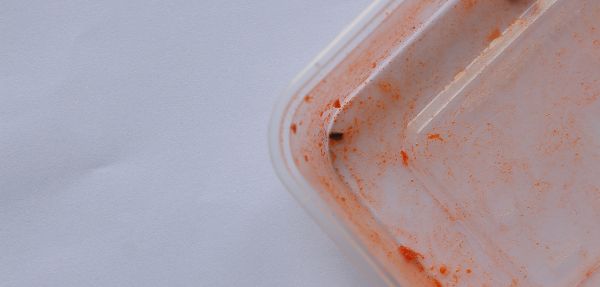
Removing stains from your plastic containers requires a bit more than just a regular clean. There are some extra steps you will have to take – here are some of the efforts you can try:
1. Place The Container In The Sun
The sun has the power to bleach stains out of your containers. Simply leave the container on a window sill, a doorstep, or a patio for at least 2 to 3 hours, or longer. The stain will begin to fade or disappear completely. When you bring it back inside you should give it another wash.
2. Bleach
If the stains didn’t go away after being out in the sun, then chlorine bleach is the next best option. You can use Clorox or any other brand of bleach you have. Bleach is known for lightening the look of set-in stains.
Make a solution inside the container of 1 part bleach and 2 parts water, make sure the container is filled with the diluted solution. Allow it to soak inside the container for about 30 minutes. Once the container has been soaked for long enough, pour out the solution and wash the container with hot water and dishwashing liquid using a sponge or kitchen brush if necessary. The stains should now be gone, and you can end by drying the container with a dry, clean tea towel.
Tip: Be careful when using bleach – Be sure that you are in a well-ventilated area and make sure to wear protective gloves on your hands to prevent damaging your skin.
3. Oxidise
Harness the power of oxygen by filling your container with hot water and dropping in 2 denture tablets. Leave it to soak for 10 minutes and then wash as normal. Or try using Oxiclean or any other type of oxygenated cleaner – follow the instructions on the bottle to clean your container.
4. Limescale
If your containers have a build-up of white mineral deposits, they can be removed with white vinegar. Soak a paper towel with vinegar and press it directly onto the deposits. Then leave it to soak for about an hour before scrubbing the stains away. Repeat this process as many times as required for the limescale to be removed.
5. Deodorising
If your container is stained and also smells, try cleaning it with baking soda. Mix about a teaspoon of baking soda with a cup of water and then scrub the container with the solution using a sponge. Or you can try undiluted vinegar, which cleans almost everything inside your home.
Avoid Future Stains
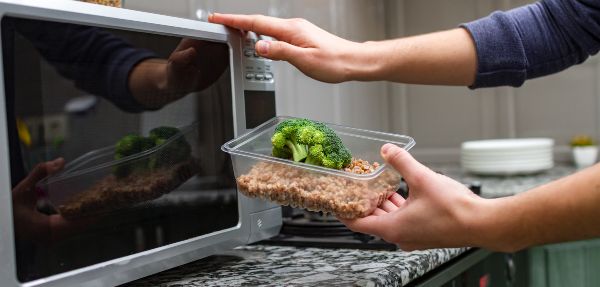
To keep your plastic containers looking good as new, it’s best to prevent stains before they occur. Here are some stain prevention tips:
- If you’re going to make food or store foods that you believe could stain the container, spray the container with a cooking spray before placing anything inside. A light coating should be enough. Be sure to get a little spray onto each of the sides and the button inside the container; it is not necessary to spray the outside. Make sure the cooking spray isn’t a flavoured one to avoid altering the taste of your food.
- Prevent tomato sauce from staining plastic containers by not microwaving foods covered in it, as it is the reheating process that causes stains.
- If you don’t plan on putting a container in the microwave, line it with aluminium foil. This will help to lift the food from the container and won’t allow any residue to be left behind. Do not do this with acidic foods as the aluminium foil will start to react with the acid. Don’t forget that you can recycle the foil after each use.
After trying these methods, your containers should be free from stains and grease. If the stains remain, then your best bet is probably to throw them away. One of the benefits of plastic is that it is inexpensive to replace.
Make sure you know how to clean your kitchen, together with the rest of the appliances in it, when cleaning your plastic containers. If you would like to learn about how to clean other areas of your home, head over to our blog for cleaning how-tos and guides.
